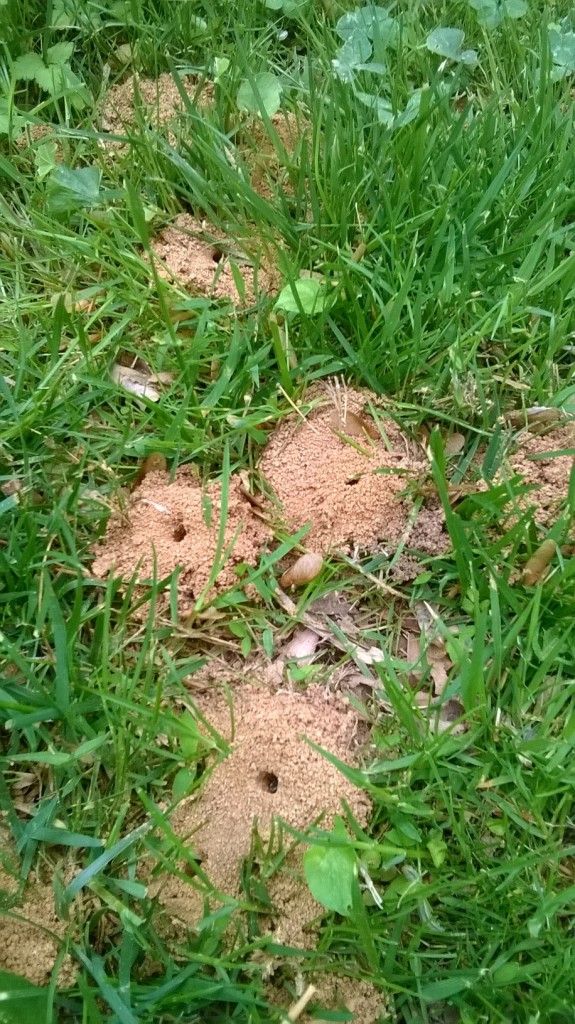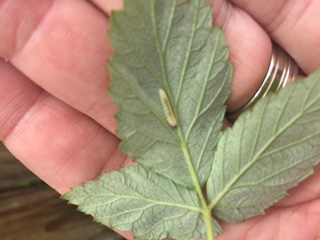Meet Mike at Behnke’s in Beltsville, Maryland, in June
Mike will tell you everything you need to know to enjoy the best-tasting backyard tomatoes ever from 1:30 to 3 p.m. at Behnke’s 5th Annual Garden Party event on Saturday, June 6. Find details on the event’s website.
Teeming tons of tree trash trouble
Diana in Alexandria writes: “Why are maple trees dropping so many ‘helicopter’ seeds this
year? There are zillions covering the ground, sidewalk, cars and everything else. I’ve never seen such an abundance of maple seeds!”
Well Di, trees will often produce a large volume of seeds as a reaction to stress — peppering the world with lots of potential children just in case their end is near (because of, for instance, two painfully hard winters in a row). Some trees are also cyclical droppers, producing a banner amount of seeds or nuts every few seasons with average to low yields in between.
But maples are generally prolific. Wiki says that a single tree will often drop a couple hundred thousand of those ‘samaras’ in the spring, so perhaps your seemingly-exaggerated numbers aren’t really that far off. (How many hundred thousand does it take to make a zillion?)
Anyway, these little choppers may be more apparent this season because of the ‘invisible drought’ we’ve been enduring. Most of us haven’t had any rain to wash those seeds — and all the other abundant tree debris that’s been dropping — away for quite some time now.
Baby, it’s dry out there
We’ve been getting lots of emails about the abundance of tree schmutz covering our area — thready oak calkins, winged maple seeds and pollen so heavy our cars all look they’ve just been driven through the desert.
One reason this arboreal debris is so apparent this spring is the stunning lack of rain most of us have had over the past few weeks. (Of course our cars are dirty; the only thing washing them these days is us!) And the forecast is only for scattered showers over the next few days, not the saturating soaking that gardeners and farmers are beginning to really need.
So if, like your Trusted Garden Editor, you have missed the gift of the occasional thunder-boomers that have graced other landscapes over the past few weeks, do not be afraid to water. And that’s closer to an order if again, like moi, you haven’t seen rain in quite a while.
The best way to hydrate lawns and gardens is to thoroughly saturate the soil with a deep, long watering of at least an hour, once a week. (No short soakings or overly-frequent watering.) Water only in the early morning if you’re using a sprinkler or other systems that wet the leaves of your plants. But you can let a hose drip slowly at the base of big plants or mass plantings any time of day. (I’ve been sprinkling dedicated areas in the morning and then moving the hose to drip at the base of peach trees and rhododendrons the rest of the day. And night lately.)
Note: New plantings (that’s anything in the ground for a year or less) must be deep-watered once or twice a week if you’ve been without rain, or you risk losing those precious plants. And really new plantings should be drip-watered for a solid 12 hours immediately after they are installed.

Bees nesting in lawns in the spring are good
Joe in Rockville writes: “We have what looks like hundreds of anthills on a portion of our front lawn, with what appear to be nonhostile small bees entering and exiting. The holes are on both sides of the driveway and nowhere else. We’ve never noticed these insects before. Any ideas or concerns?”
Bless you for not harming them, Joe. They are non-stinging, ground-nesting native bees; superb pollinators, who will reward your kindness of not killing them by dramatically increasing the number of flowers and fruits on your landscape. And then they will disappear as quickly as they appeared. They are as ephemeral as wild violets.
To prevent their return next season, I suggest you over-seed those areas along the driveway this fall (mid-August through mid-September is ideal). These native bees tend to look for bare spots and poor areas of lawn in which to nest, and the areas next to driveways or closest to the street are the first to show damage from a hard winter and de-icing products.
But ‘bees’ nesting in lawns in the fall are bad
A genuine tip of the hat to Joe in Rockville, who realized that the native bees digging in his lawn were harmless. These fabulous native, American pollinators don’t sting, but do pollinate flowers much better than the non-native honeybee, which does sting (although generally not aggressively).
Our area is host to hundreds of species of native bees, several of which are ground nesters or “digger bees” (general terms that encompass several species). But you’ll pretty much only find this kind of activity from stingless native bees in the spring, and only in what’s called the solitary style: one bee to each hole (although there can be hundreds of little individual nest holes in a fairly small area).
These distinctions are important, as these solitary spring bees should be protected. They are important pollinators of food and flowers and are nonaggressive and sting-free.
But you need to be aware that ground-nesting insects that look like bees in late summer are probably yellow jackets — dangerous and aggressive members of the hornet family that must be avoided; or eradicated if they’re close to a home or children’s play area.
Yellow jackets do sting, they like to sting. Each one can sting repeatedly, and a nest may contain thousands of wasps by August. Typically all of the dangerous nasties come and go from a single hole in the ground.
And don’t worry; I’ll explain how to safely control these menaces when we get to that point in the season.

What’s eating the roses and raspberries?
Nick in Pasadena writes: “I have something eating my raspberry and rose leaves. Same thing happened last year, and I’d like to put an end to it fast this season. I’m sending a photo of one potential culprit I found on the raspberry leaves; not sure if it’s also the problem on the roses. Can you recommend a treatment that’s safe for me, my family, my dogs and The Bay?”
Absolutely, Nick. Your photo clearly shows a small caterpillar. Raspberries and roses are (weirdly) in the same plant family, so the odds are good that the rose pest is the same caterpillar or a close relative.
Either way, the answer is Bt, which stands for Bacillus Thuringiensis. But luckily, everyone just calls it “Bt” (or more specifically “BTK” because it’s the ‘kurstaki’ stain of the bacillus). This perfectly precise and organically-approved pesticide (derived from a soil organism) is harmless to everything except caterpillars that chew on the sprayed leaves. (They may take a day to die, but they stop feeding right after their first bite.)
Sold at retail (and widely available, especially at independent garden centers) under brand names like DiPel and Thuricide, and as Green Step from the mail-order supplier Gardens Alive, Bt will safely save your roses and raspberries without harming anything else.







